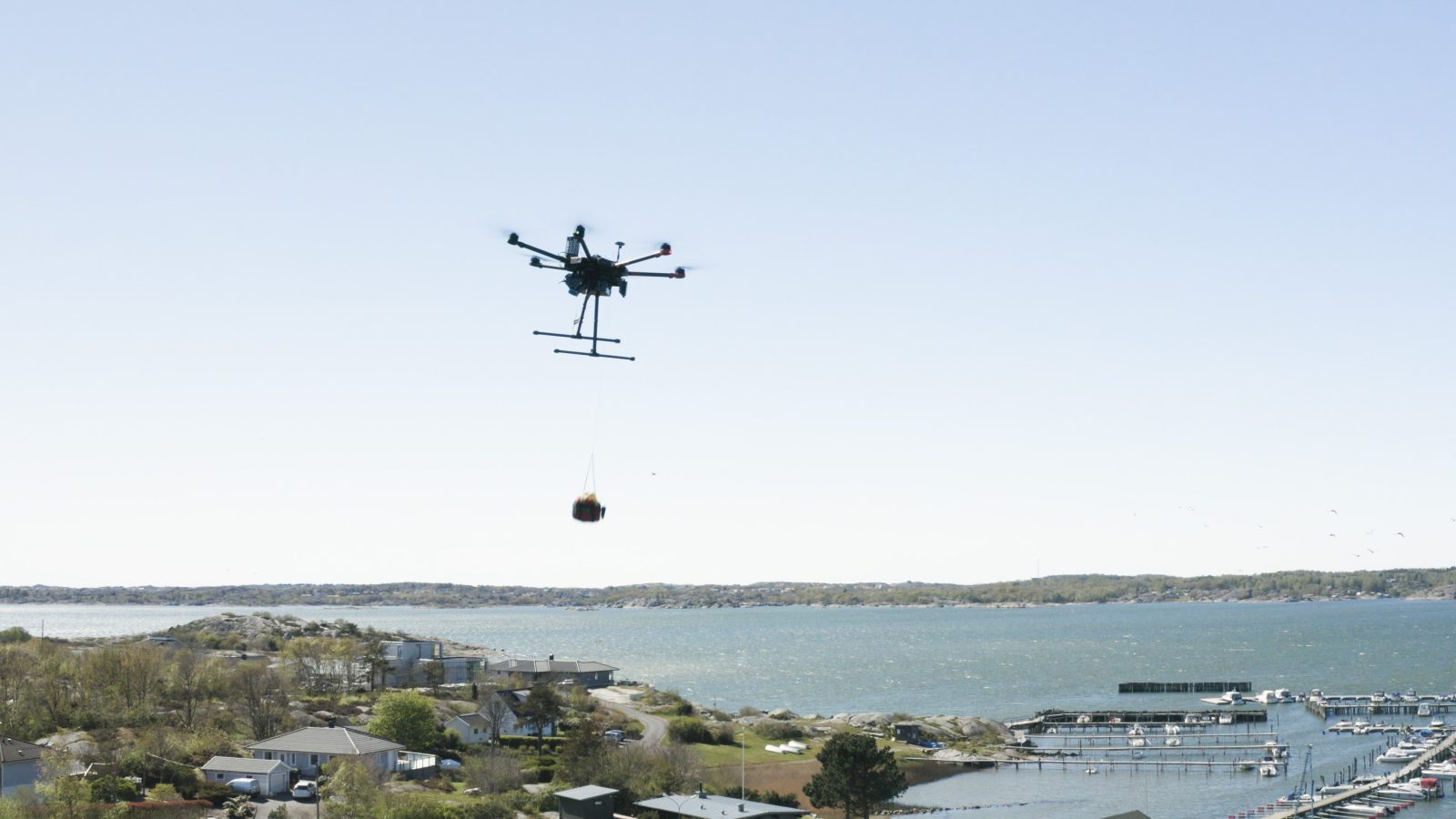
As far as UAV flights go, this one supremely qualifies as beyond visual line of sight. Last month, Swedish specialized drone services company Everdrone successfully controlled the delivery of an automated external defibrillator (AED) from a distance of 800 kilometers away – and an entirely different country.
The 1.6 km drone delivery of an AED flew a five-minute route in Helsinki, Finland, but was controlled by Everdrone technicians in Gothenburg, Sweden. The mission was the first UAV delivery of an AED piloted from a different country, and one of the few de facto cross-border drone operations in the European Union. Several successive variations of AED deliveries to other destinations around Helsinki were orchestrated from the Gothenburg command center – but by then, everyone involved had been there, done that, and drank the Champagne. Still, it’s a big deal.
Everdrone, which focuses on serving first responder and public safety clients, has made drone delivery of AEDs a priority. It already operates a total of seven UAVs dedicated to that function in four Swedish cities, with a fifth city to be added soon. The craft fly those emergency missions several times each week.
The company’s tests in Helsinki were an extension of that work in a country that can sorely use the help. Between 5,000 and 10,000 people die from out-of-hospital cardiac arrests in Finland every year. Research has shown the chance of survival of people suffering heart attacks in remote places decreases 10% each minute after the onset of arrest. Studies in Sweden have demonstrated using drones to deliver AEDs in those situations is generally faster – sometimes much faster– than traditional ground options.
The cross-border tests were undertaken in partnership with Forum Virium Helsinki, which endeavors to speed innovation and development of the Finnish capital as a smart digital and sustainable city.
According to Daniel Blecher, Everdrone’s ground operations manager, the communications and navigation tech are now so solid and familiar that the only tricky element of the tests was navigating the European Union’s administrative process to get clearance for cross-border BVLOS flights.
Once that was in hand, and the drones were ready to fly, LTE cellular connections eliminated latency between the pilot and delivery drone. Those UAVs, meanwhile, autonomously flew pre-established paths. The human monitor was required to visually check the drop target was clear and manually order the lowering of the AED. The only other thing the Gothenburg team had to do was keep Helsinki air controllers and local partners informed of the UAV’s progress.
“With a safety operator on-site monitoring the operations in Helsinki, a number of missions were carried out during the (trials) in which an autonomous drone flew to the scene of a simulated emergency and lowered an AED to the ground using a winch system, before flying back to the launch location,” Blecher explained. “The missions were performed over a simulation of a residential area in order to showcase the intelligent route planning and autonomous flying capabilities of the drone.”
With the unprecedented cross-border AED drone delivery challenge in the bag, Everdrone says it’s now looking to equip the UAVs used with position lights and LED front beams to enable night flights.
FTC: We use income earning auto affiliate links. More.




Comments